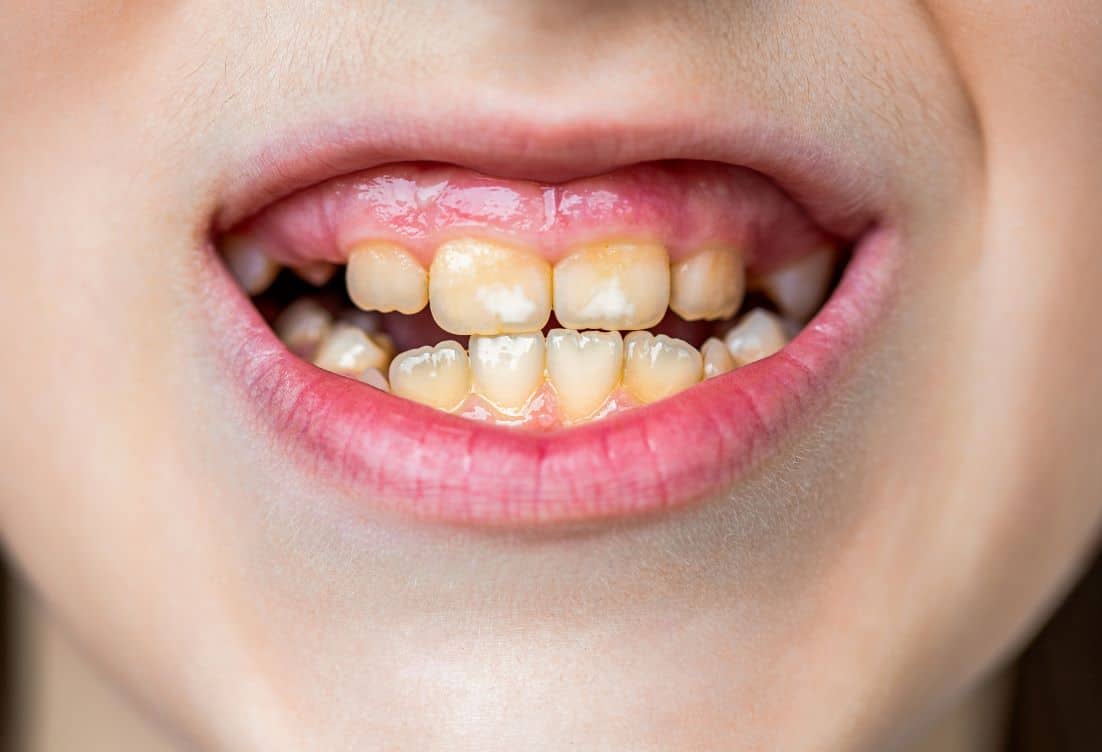Gum disease, often associated with adults, can also affect children. While it’s less common in younger patients, gum disease is still something parents should be aware of. Gum disease begins as gingivitis, which is an inflammation of the gums caused by plaque buildup. If left untreated, gingivitis can progress into a more serious condition called periodontitis, which can damage the gums and bone supporting the teeth. Fortunately, with proper care and early intervention, gum disease in children can be treated effectively.
Understanding Gum Disease in Children
In children, gum disease typically starts as gingivitis, a mild form of gum inflammation. Plaque, a sticky layer of bacteria that forms on the teeth, causes gingivitis. If plaque is not removed by brushing and flossing, it can irritate the gums, leading to redness, swelling, and bleeding. When gingivitis is left untreated, it may progress to periodontitis, a more serious condition that affects the bones and ligaments supporting the teeth.
Though gum disease in children is usually mild, it is essential to catch it early. If left untreated, periodontitis can result in tooth loss and other oral health issues. Regular dental check-ups, along with good oral hygiene, can prevent the progression of gum disease.
Symptoms of Gum Disease in Kids
Gum disease can be difficult to spot in children, especially in the early stages. However, there are some common symptoms that parents should look out for. The first sign is often red or swollen gums. Healthy gums should be firm and pink, so any redness or puffiness may indicate inflammation. Another common symptom is bleeding gums, which typically occurs when brushing or flossing. If your child frequently has bad breath, even after brushing, it may be a sign of bacterial buildup in the mouth.
As gum disease progresses, the gums may begin to recede, or pull away from the teeth. This can cause the teeth to appear longer or uneven. In severe cases, gum disease can cause teeth to become loose, which can be painful and lead to tooth loss.
Causes of Gum Disease in Children
The primary cause of gum disease is poor oral hygiene. When children don’t brush and floss regularly, plaque builds up along the gumline and can lead to inflammation and infection. Other factors can increase a child’s risk of developing gum disease. For example, hormonal changes during puberty can make the gums more sensitive and prone to inflammation. A diet high in sugary foods or drinks can also contribute to plaque buildup, as sugar feeds the bacteria that cause gum disease.
In some cases, mouth breathing can dry out the gums and increase the risk of infection. Children with allergies or nasal issues that cause mouth breathing may be more likely to develop gum disease. Additionally, certain medical conditions, like diabetes, can increase the risk of gum problems. A family history of gum disease can also make a child more susceptible.
Treatment Options for Gum Disease
The good news is that gum disease in children is treatable, especially when caught early. The first step in treatment is improving oral hygiene. Brushing at least twice a day with fluoride toothpaste and flossing daily are essential in removing plaque and preventing gum disease from progressing. If your child struggles with brushing, consider using an electric toothbrush to make brushing more effective.
Professional dental cleanings are another crucial part of treatment. During a routine visit, a dentist or hygienist will remove plaque and tartar from the teeth and gums, which cannot be removed through regular brushing and flossing. Regular dental visits, typically every six months, are essential for maintaining oral health and catching gum disease early.
In more advanced cases, when gingivitis has progressed to periodontitis, a dentist may recommend scaling and root planing. This is a deep cleaning procedure that removes plaque and tartar from beneath the gumline and smooths the tooth roots to help the gums reattach to the teeth. In some cases, antibiotics may be prescribed to control infection.
If a child’s gum disease is related to diet or habits, such as excessive sugar consumption or mouth breathing, addressing these factors can help prevent the condition from recurring.
Preventing Gum Disease in Children
The best way to protect your child from gum disease is through prevention. Encouraging good oral hygiene habits from an early age is key. Make sure your child brushes their teeth at least twice a day with fluoride toothpaste and flosses daily. Limiting sugary snacks and drinks can also help prevent plaque buildup. Regular dental visits are essential to detect any signs of gum disease early and to ensure your child’s teeth and gums stay healthy.
As children grow older and become more independent, it’s important to continue reinforcing the importance of brushing and flossing. Remind them to maintain their oral care routine, even if they don’t feel like it.
Conclusion
While gum disease is less common in children than in adults, it’s still an important condition to be aware of. The good news is that with early detection and proper treatment, gum disease in children is highly treatable. By encouraging good oral hygiene habits, limiting sugary foods, and scheduling regular dental check-ups, you can help protect your child’s smile for years to come.
If you notice any symptoms of gum disease in your child or have concerns about their oral health, it’s important to schedule a visit with our office. Early intervention can help ensure your child’s teeth and gums remain healthy and strong.


